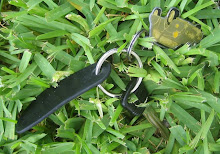The national Basilica of the Sacred Heart or Koekelberg Basilica in Brussels, Belgium, is the sixth largest church in the world. It was built to commemorate the 75th anniversary of Belgian independence. In 1905 King Leopold II laid the first stone, but the edifice was not completed until 1971.

The church, on Koekelberg hill, is a landmark on the Brussels skyline. It is the largest building in Art Deco style in the world, being 89 metres high and 167 metres long (outside length). The church has room for 2000 people.

Some views inside the Basilica.




From atop the Basilica, some views of Brussels.


In the distance, one can see the Atomium, a monument built for Expo '58, the 1958 Brussels World's Fair. Designed by André Waterkeyn, it is 102-metres (335 ft) tall, with nine steel spheres connected so that the whole forms the shape of a unit cell of an iron crystal magnified 165 billion times.




Some shots from the Grand Place. The Grand Place (French) or Grote Markt (Dutch) is the central market square of Brussels. It is surrounded by guild houses, the city's Town Hall and the Bread House.
The Grand Place was first laid out after the construction of the town hall, at the centre of the city's commercial district. Neighboring streets still reflect the area's origins, named after the sellers of butter, cheese, herring, coal and so on. The original Grand Place was a medley of buildings constructed between the 15th and 17th centuries in a variety of styles.
On August 13, 1695, a 70,000-strong French army under Marshal François de Neufville, Duke of Villeroy began a bombardment of Brussels. The French launched a massive bombardment of the mostly defenseless city centre with cannons and mortars, setting it on fire and flattening the majority of the Grand Place and the surrounding city. Only the stone shell of the town hall and a few fragments of other buildings remained standing. That the town hall survived at all is ironic, as it was the principal target of the artillery fire.
The square was rebuilt in the following four years by the city's guilds. Their efforts were regulated by the city councilors and the Governor of Brussels, who required that their plans be submitted to the authorities for their approval. This helped to deliver a remarkably harmonious layout for the rebuilt Grand Place, despite the ostensibly clashing combination of Gothic, Baroque and Louis XIV styles.
The Grand Place was named by UNESCO as a World Heritage Site in 1998.



The Town Hall. At the top of the 97 meter (318 feet) tower stands a statue of St. Michael, the patron of Brussels and whom I managed to cut off in the photo.

A very healthy Belgian meal. Some fries with sauce on a meat patty sandwich. Bernard gave it the nickname, the "machine gun."

Alex's dad's cat.

The other neighbor's cat.

And tomorrow I am off by rail to see my sister, Georgina, her husband, Riaan, and their son, Alan, in Interlaken, Switzerland.




































































